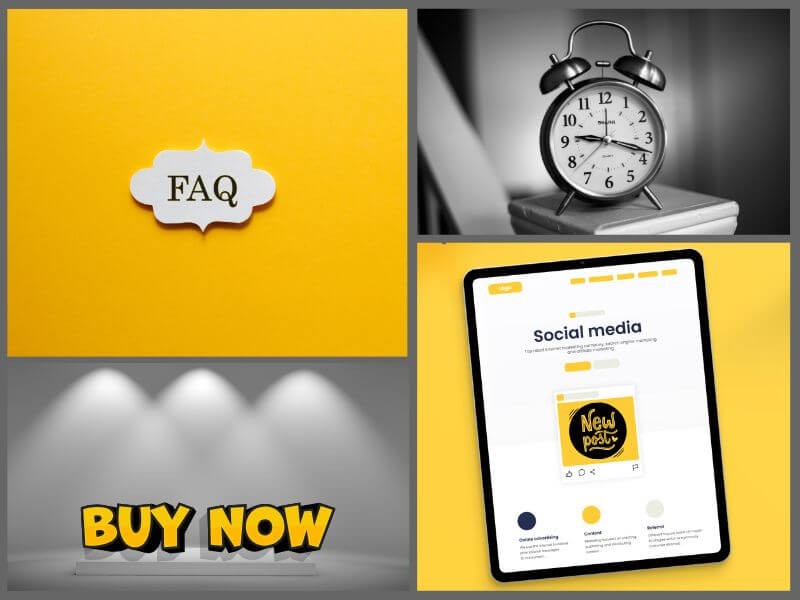
Are you stuck? You're doing digital marketing, but without results? You’re spending money on ads, posting daily on social media, yet sales remain stagnant? You're not alone. Many companies invest in digital marketing, believing they’re doing everything “by the book,” yet they fail to see tangible results. Why does this happen?
The problem with digital marketing that doesn’t deliver results is usually not in the budget or algorithms, but in the strategy. Or more precisely – in the lack of one.
Here are the most common reasons that hinder your business growth – and how to eliminate them.

Everyone says social media is important. For connection, for your business, and for staying present. And it is.
But if your marketing relies solely on Instagram posts (which you occasionally copy and paste onto Facebook), you're doing the bare minimum.
Social media can be a great companion to your digital marketing (yes, a companion), but on its own, it’s not a strategy.
Example: A small natural cosmetics brand owner relies exclusively on Instagram posts and occasionally boosts them. They have no website or email marketing. The result? Dependence on the Instagram algorithm and an unreliable flow of customers.
How to fix it?
Boosting posts sounds simple – you click, pay a few euros, and expect a flood of customers or reservations.
The truth is that boosted posts lack precise targeting.
Meta (Facebook/Instagram) and Google Ads have advanced tools for detailed audience segmentation – why not use them?
Example: A fitness trainer invests 100 euros in boosting a post about a discount on training sessions. Thousands of people see the post, but no one books a session – because it wasn’t targeted at people who are actively looking to train.
How to fix it?

You have a website, but sales aren’t happening?
The problem may not even be traffic but the user experience. If the site isn’t intuitive, loads slowly, or if visitors don’t know what to do and where to do it – they leave.
Example: A restaurant has a website where it’s not possible to book a table online. Visitors have to call by phone, wait, and eventually give up, choosing the competition instead.
How to fix it?
If you don’t measure results, how will you know what works and what doesn’t? Many entrepreneurs launch campaigns and then "let them run on their own" instead of tracking data and adjusting their approach.
Example: An online store owner spends hundreds of euros per month on Google Ads but doesn’t track which keywords generate sales. They continue paying for ineffective ads instead of optimizing the budget based on the best-performing results.
How to fix it?

Our digital marketing agency, Zona Plus, started working with a newly opened fitness studio.
The goal was clear:
Result: 100 sign-ups in 14 days, of which 50% attended a trial session, and 90% of them became regular members of the fitness studio.
How did we achieve this?
If you recognized yourself in the points above – maybe it’s time to stop randomly spending money and start doing something that will bring real results.
Digital marketing is not just about posting content, paying for ads, and boosting posts – you need to understand your buyers and clients, test your approaches, and continuously optimize. 

You’re probably targeting an audience that is too broad or not relevant. Boosting posts without a strategy doesn’t deliver results because Meta and Google Ads offer precise targeting. The key is in detailed audience segmentation and retargeting.
Simply being present on social media is not a strategy. If you don’t have a website, email marketing, and SEO, you are relying solely on algorithms you don’t control. You need an omnichannel strategy.
It’s possible that your website isn’t optimized for conversions – it loads slowly, isn’t intuitive, or lacks a clear call to action (CTA). Check the user experience and simplify the purchasing process.
Without tracking data, you can’t know what’s working. Use Google Analytics, Meta Pixel, and A/B testing for ads to adjust your strategy and maximize results.
It depends on the strategy and industry, but well-structured campaigns can deliver initial results very quickly. Continuous optimization ensures long-term success.
Yes, but only with a good strategy. Properly targeted campaigns, organic content, and email marketing can significantly increase conversions without large ad investments.
Analyze current activities, define your target audience, optimize your website, set up high-quality ads, and track results to continuously improve them.
Book a free analysis and discover concrete opportunities for improvement! 